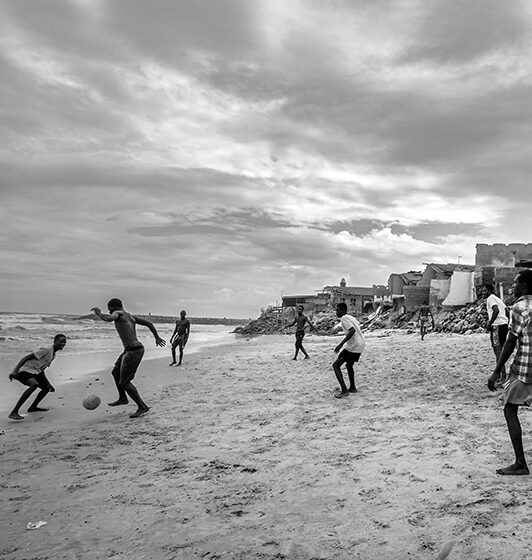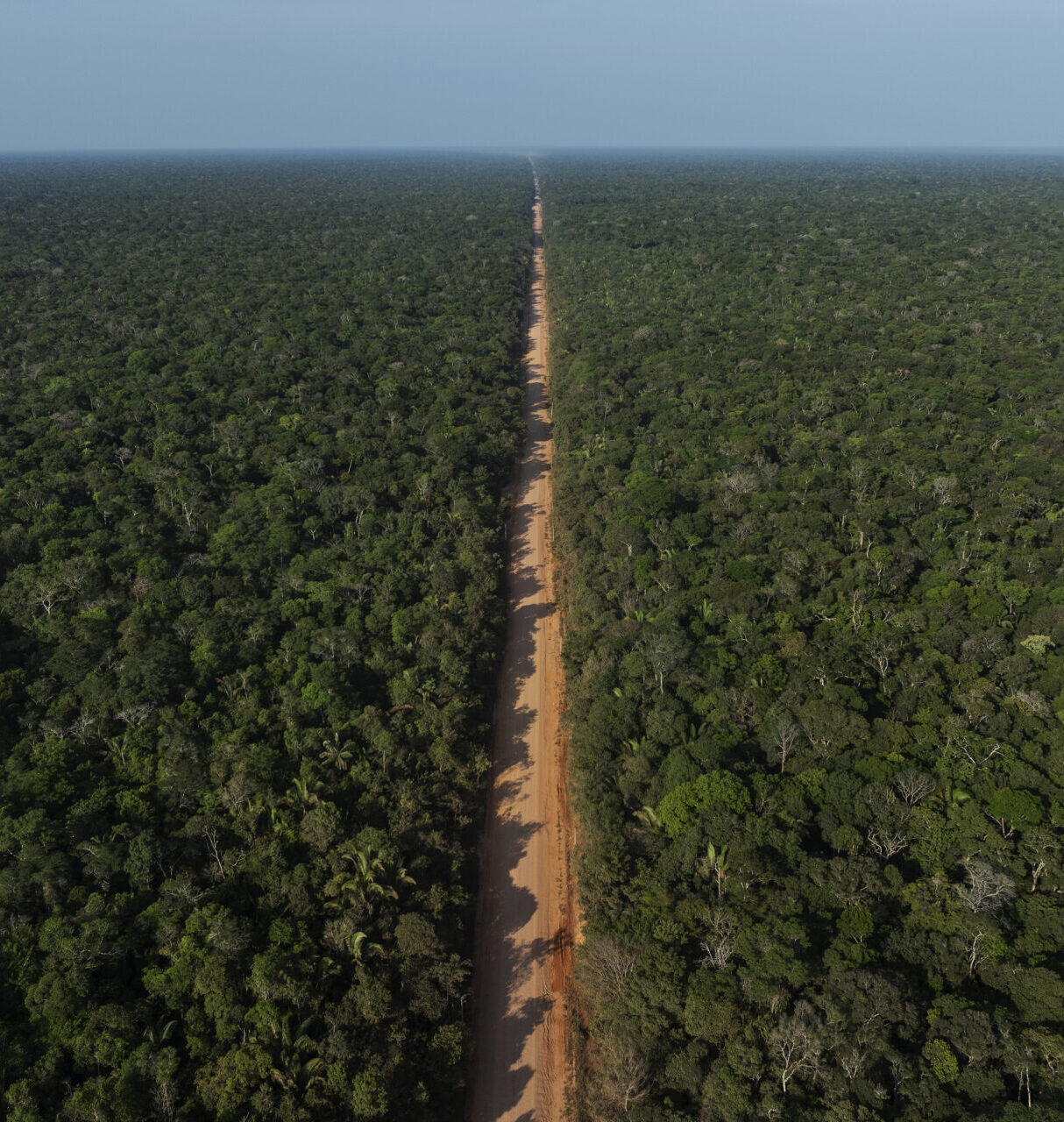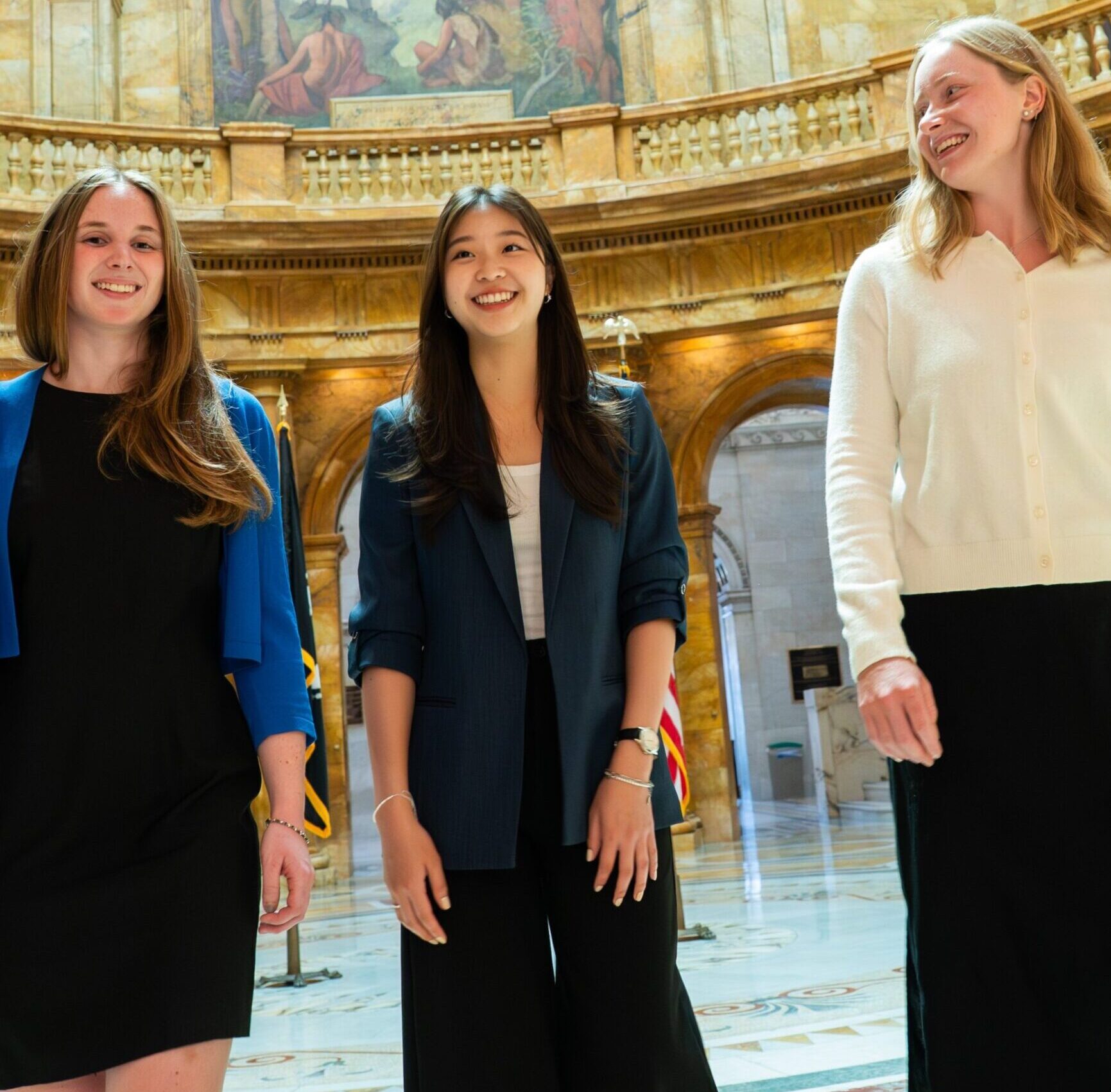Financing climate adaptation in the developing world
Climate change is expensive.
In the capital-starved Global South, meager government coffers face multiple, competing demands: Build a solar farm or respond to a flood? Subsidize cleaner transportation or move a village to higher ground?
Often there is no choice: The money coming in is earmarked for mitigation, largely decarbonization. Though adaptation saves lives, it is harder to finance because the returns are usually less attractive to investors.
“One of the key challenges to managing the fallout of climate change in West Africa is the dearth of climate financing specifically for climate adaptation,” said Hippolyte Fofack, Chief Economist at the African Export-Import Bank, at a November workshop convened by Harvard University’s Salata Institute for Climate and Sustainability.
Fofack and other experts were in Cambridge to attend three days of discussions on local adaptation strategies in the Gulf of Guinea and South Asia sponsored by Harvard University’s Salata Institute for Climate and Sustainability.
The conversations were timely, held days before the annual United Nations climate change summit, COP28, in Dubai. Talks at COP28 have been dominated by finance and calls for rich countries to muster funds to cover climate emergencies and reparations. Host United Arab Emirates has pledged that “fixing climate finance” is a priority, saying it will “encourage donors to double adaptation finance by 2025.” Yet there is a long way to go. Though wealthy nations last year, for the first time, likely met a promise to mobilize $100 billion in climate finance for poor countries, only about a quarter of that funded adaptation. Experts estimate mitigation and adaptation in the developing world will require over $1 trillion per year through 2050.
While most participants at the workshop were eager to focus on solutions, one of their hosts emphasized the inherent unfairness of this arrangement, where the world’s poorest communities are asked to bear the burden of a crisis they were least responsible for making.
“Adaptation fundamentally touches on the ridiculous inequality of climate change,” said Daniel Schrag, Sturgis Hooper Professor of Geology and Director of the Harvard University Center for the Environment.
The United States, he said – using a thought experiment to illustrate “the kind of ethical dimensions of this problem” – has added about 500 billion tons of carbon dioxide into the atmosphere over the last 150 years.
“A very simple principle might be that you have to clean up your own mess,” he continued. If that carbon were priced at a low $100 per ton, “that means the U.S. owes the world $50 trillion. Just to give you an order of magnitude. It could be four times that. But the U.S. is not going to pay the world $50 trillion.”
As participants debated mechanisms to ensure available assistance is spent wisely and how to attract blended finance, it became clear that politics often stands in the way.
“Investors need to have their risk underwritten. The mechanism to do this is well known; the economics are well known; it’s a political problem,” said Tarun Khanna, Jorge Paulo Lemann Professor at Harvard Business School and Director of the Lakshmi Mittal and Family South Asia Institute.
In India, for example, the central government has done too little to address investor risks, creating unnecessary frictions, said Renuka Sane, Associate Professor at the National Institute of Public Finance and Policy in New Delhi.
She cautioned against blaming private capital, “because a lot of our regulatory environment has not allowed private capital.”
“Why are there no bankable projects? Because the policy environment is such that there is a lot of risk. And private capital doesn’t want to touch it. It becomes infeasible for money to come in. Once our institutions are fixed, private capital will find its way,” Sane said at the workshop, which was co-sponsored by the Mittal Institute, the FXB Center for Health and Human Rights, and the Stanley Center for Peace and Security.
Banking on solutions
Insurance, with caveats, was among the solutions considered.
Satchit Balsari, an assistant professor at Harvard’s medical and public health schools, described a new parametric insurance program in India where daily wage workers with coverage can receive a payment in lieu of work when the temperature crosses a threshold of 45-degrees Celsius (113 Fahrenheit). While calling the program “very innovative,” Balsari highlighted outstanding questions: “How do you decide which 45? Is it the 45 on the street? Is it the 45 in their homes, in their workshops? What about the humidity? Who decides?”
Around the world, private insurers are leaving markets where they judge the risks have grown too high. This is happening in India as well, said Mihir Bhatt, Founder and Director of the All India Disaster Mitigation Institute, who emphasized that as climate shocks increase in frequency, so do demands for adaptation finance and indemnification.
Plus, as the climate crisis “cascades, compounds, becomes far more complex,” adaptations are not keeping pace. “We are adapting to the present or the past,” Bhatt warned. By not preparing for the inevitable, the crisis will cost more in the long run: “We are missing the opportunity to make far more money by not financing adaptation for the future.”
Eventually the immense costs of these disasters will attract investments, said John D. Macomber, a Senior Lecturer of Business Administration at Harvard Business School.
“A lack of investments is going to cost a tremendous amount of money to the private and public sectors both in the physical sense and the public health sense,” Macomber explained. “So, the opportunity for a better outcome – either so assets aren’t destroyed, or so that people don’t sicken and die because of the heat – will attract capital.”
In the same vein, eventually Africa’s natural resources will be properly valued.
To some, the solution is carbon offsets – the sale of tradable “rights” to a carbon sink, like a forest, to someone wishing to balance emissions elsewhere.
But Vanessa Ushie, Acting Director of the African Natural Resources Center at the African Development Bank, warned about the unintended effects of such markets. Pointing to Zimbabwe, she said, “land is being parceled out to external investors in a bid to invest in mitigation, but it us actually making people vulnerable and dispossessed of land.”
“We shouldn’t push countries to take on some of these initiatives. They need to do their homework. They need to know what they have, the value of the carbon,” she said. “The information asymmetry needs to be resolved before Africa can benefit from the carbon trade.”
Instead, Ushie said, the African Development Bank is encouraging ecotourism, trying to better regulate the extractive sector, and breaking down barriers to trade and connectivity within the continent.
“We see nature as a service, a vital service sustaining humans and the planet,” said Ushie. “Let’s leverage these resources more sustainably so that Africa is more resilient and not dependent on external influence.”










